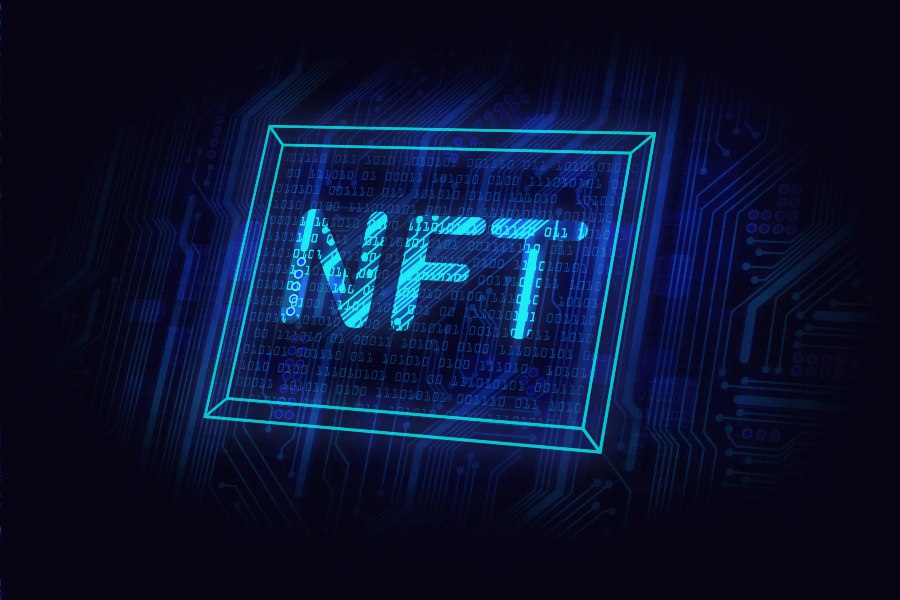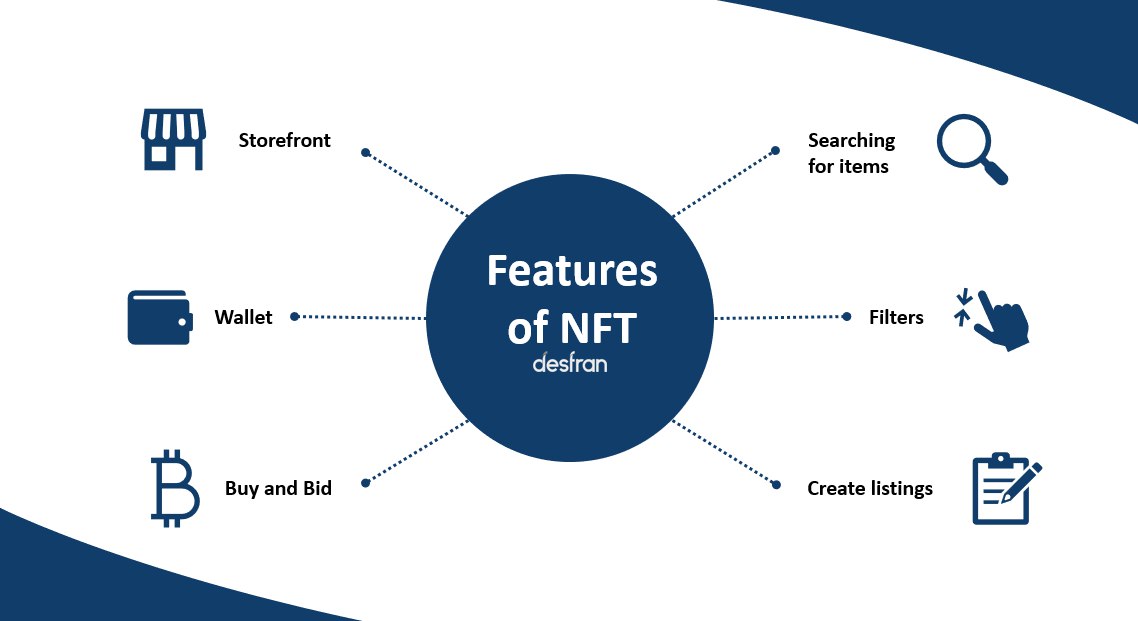An NFT (Non-Fungible Token) is a type of digital asset that represents ownership of a unique item or piece of content, such as digital art, music, videos, virtual real estate, collectibles, and more. NFTs are created using blockchain technology, which is a decentralized and transparent digital ledger that records ownership and transaction history.

Here's how NFTs work :
1. Creation:
An NFT is created by an artist or creator using a platform that supports NFTs. The creator typically mints the NFT, which involves creating a digital token that represents ownership of the digital asset.
2. Unique Identifier:
Each NFT is assigned a unique identifier that distinguishes it from other NFTs. This identifier is stored on the blockchain, which is a distributed network of computers that verifies and records transactions.
3. Ownership:
The NFT represents ownership of the digital asset, and the creator or artist retains the original NFT as proof of ownership. This allows for verifiable ownership and provenance of the digital asset, as the ownership history is recorded on the blockchain.
4. Buying and Selling:
NFTs can be bought, sold, and traded on various online marketplaces that support NFTs. When someone purchases an NFT, they are essentially buying the ownership rights to the digital asset represented by the NFT.
5. Royalties:
One unique aspect of NFTs is that creators can often earn royalties from subsequent sales or transfers of the NFT. This means that if the NFT is resold in the future, a portion of the sale proceeds may go back to the original creator, providing ongoing revenue potential.
6. Authenticity and Scarcity:
NFTs provide a way to establish the authenticity and scarcity of digital assets. The unique identifier and ownership history recorded on the blockchain can verify the authenticity of the digital asset, and the fact that NFTs are typically limited in number can create a sense of scarcity, which may affect their value in the market.
7. Interoperability:
NFTs are typically built on blockchain platforms that are interoperable, meaning they can be transferred or sold across different platforms. This allows for greater flexibility and liquidity in the NFT market.

What is the connection between NFT and Crypto ?
NFTs (Non-Fungible Tokens) are a type of digital asset that are typically created, bought, and sold on blockchain platforms, which are the same technology that underlies cryptocurrencies like Bitcoin and Ethereum. NFTs and cryptocurrencies are related in that they both utilize blockchain technology, but they serve different purposes and have distinct characteristics.
Here are some key points about the connection between NFTs and crypto:
1. Blockchain Technology :
NFTs, like cryptocurrencies, are created and recorded on blockchain networks. Blockchain is a decentralized and distributed digital ledger that provides transparency, security, and immutability to digital transactions. NFTs are typically created as unique tokens on a blockchain, which verifies ownership and provenance.
2. Smart Contracts :
NFTs often use smart contracts, which are self-executing contracts with predefined rules and conditions encoded into the blockchain. Smart contracts can facilitate various functions associated with NFTs, such as royalties, revenue sharing, and automatic transfers, based on predefined rules and conditions.
3. Cryptocurrency as Payment :
NFTs are often bought and sold using cryptocurrencies, such as Bitcoin or Ethereum, as a form of payment on blockchain marketplaces or platforms. Cryptocurrencies provide a means of exchange and value transfer within the blockchain ecosystem, which can be used to buy, sell, or trade NFTs.
4. Interoperability :
NFTs and cryptocurrencies can be interoperable, meaning they can be used interchangeably or integrated with each other in certain cases. For example, some NFTs may represent ownership of physical assets, and the associated ownership rights can be transferred using cryptocurrencies as a form of payment.
5. Crypto Collectibles :
NFTs are often compared to digital collectibles or digital art, and some NFTs are created as unique or limited digital assets that can be bought, sold, and traded using cryptocurrencies. NFTs provide a way to establish ownership and value for digital assets in a decentralized and transparent manner, leveraging the benefits of blockchain technology.
When was the First NFT Made ?
The first-known NFT "Quantum" was actually minted by Kevin McCoy on the Namecoin blockchain on May 3rd, 2014. "Quantum" is described as a digital image of a pixelated octagon that changes color and pulsates in a manner reminiscent of an octopus. This is considered one of the early examples of NFTs, predating other notable projects such as CryptoKitties and the introduction of the Ethereum ERC-721 standard. It's worth noting that NFTs have since evolved and gained significant popularity and attention in the years following the creation of "Quantum," with various blockchain platforms and standards emerging for minting, buying, selling, and trading NFTs.
To buy NFTs (Non-Fungible Tokens), you can follow these General Steps:
1. Choose a Marketplace :
There are several online marketplaces where you can buy NFTs, such as OpenSea, Rarible, SuperRare, and many others. Choose a marketplace that aligns with your interests and has a good reputation.
2. Create an Account :
Create an account on the NFT marketplace of your choice. This typically involves providing your email address and creating a password.
3. Fund Your Wallet :
Most NFT marketplaces require you to have a compatible cryptocurrency wallet to make purchases. You may need to fund your wallet with the appropriate cryptocurrency, such as Ethereum (ETH), which is the most commonly used cryptocurrency for NFT transactions.
4. Browse and Choose NFTs:
Once your wallet is funded, you can start browsing NFTs available for sale on the marketplace. NFTs can come in various forms, such as digital art, music, videos, virtual real estate, and more. Choose the NFTs that you're interested in purchasing.
5. Place a Bid or Make a Purchase :
Depending on the marketplace, you may have the option to place a bid on an NFT or purchase it directly at a listed price. Follow the instructions provided by the marketplace to complete the transaction.
6. Transfer NFT to Your Wallet :
Once you have successfully purchased an NFT, it will be transferred to your cryptocurrency wallet associated with the marketplace. Make sure to transfer the NFT to a compatible wallet that supports the NFT standard of the token you bought. This will ensure that you have full control and ownership of the NFT.
